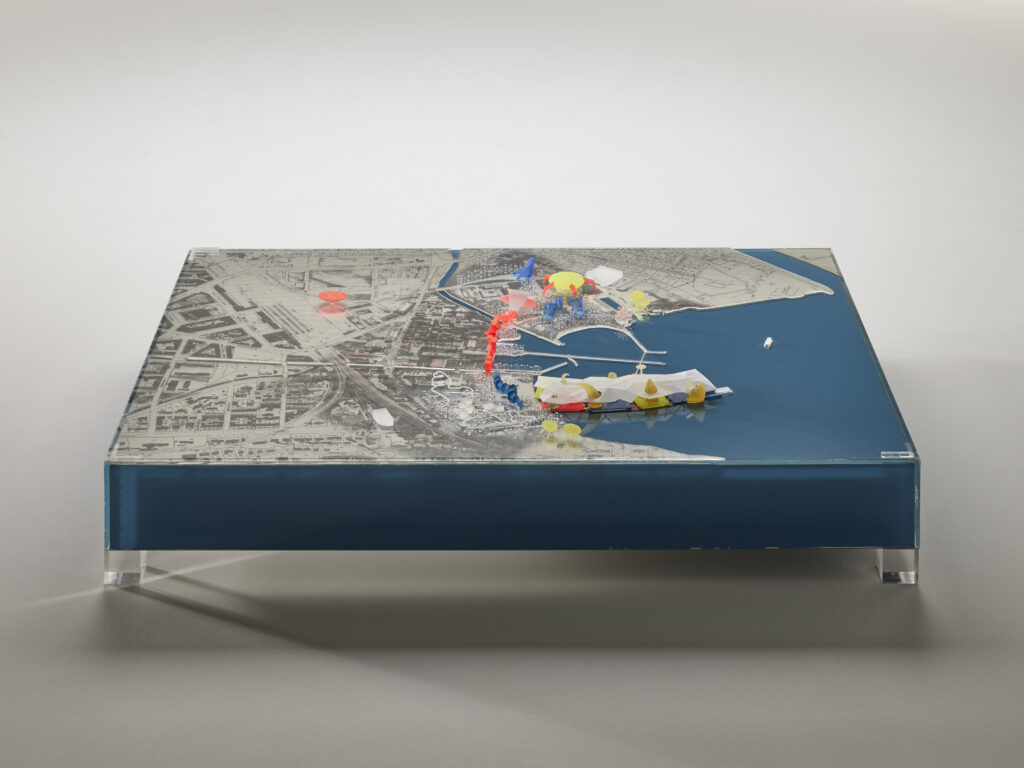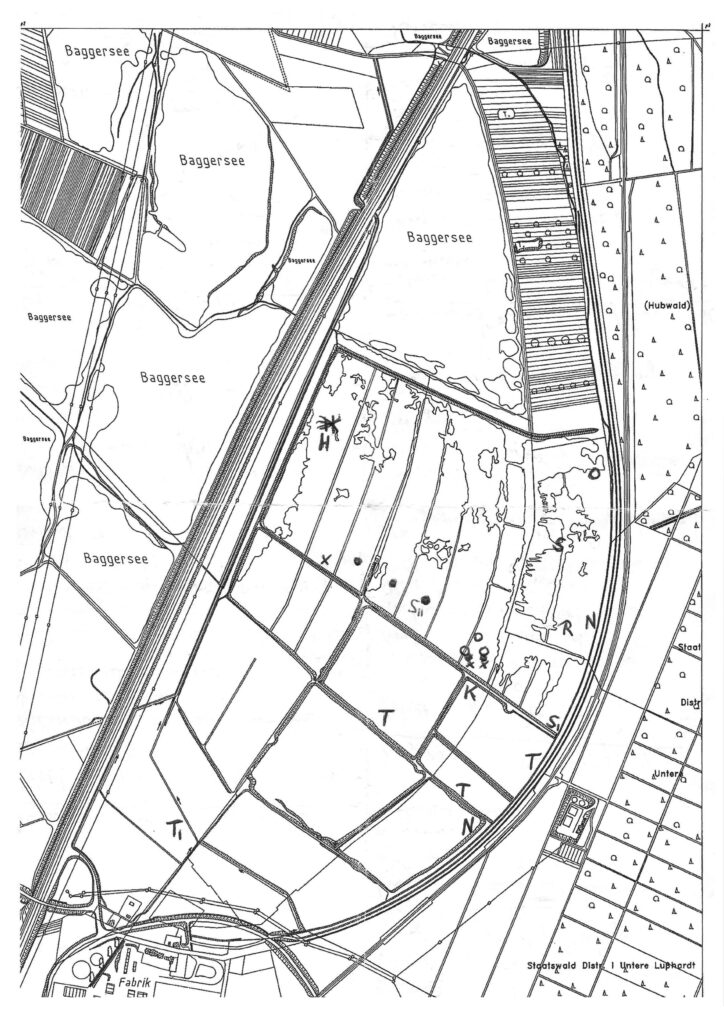Exhibition
Model
TACK Exhibition Object
Arteplagemodell Swiss National Expo 02

Arteplagemodell Biel, Mst. 1:1500. Forum und Expopark. 26 x 115 x 80 cm.
Ist Teil von:
Architekturmodell. Arteplagemodelle der Direction artistique (Leitung: Pipilotti Rist). Herstellung: Koeppel & Martinez (bis 2003) (Modellbauer:
LM-108202.1: Gn�nger
LM-108202.2: Krpan Knopfel
LM-108202.3: Kamm). April 1998. 26 x 113 x 80 cm.
A good example is the Swiss national Expo 02 that aimed to explore Switzerland’s identity under the banner ‘Nature and Artificiality’. During the preparatory phase, which lasted ten years, countless concepts were tested. In this phase, models often had the role of negotiating between organisers and the public.
Maxime Zaugg
Exhibition
Model
TACK Exhibition Object
View
Arteplagemodell Swiss National Expo 02
Maxime Zaugg

Arteplagemodell Biel, Mst. 1:1500. Forum und Expopark. 26 x 115 x 80 cm.
Ist Teil von:
Architekturmodell. Arteplagemodelle der Direction artistique (Leitung: Pipilotti Rist). Herstellung: Koeppel & Martinez (bis 2003) (Modellbauer:
LM-108202.1: Gn�nger
LM-108202.2: Krpan Knopfel
LM-108202.3: Kamm). April 1998. 26 x 113 x 80 cm.

© TACK
A good example is the Swiss national Expo 02 that aimed to explore Switzerland’s identity under the banner ‘Nature and Artificiality’. During the preparatory phase, which lasted ten years, countless concepts were tested. In this phase, models often had the role of negotiating between organisers and the public.




